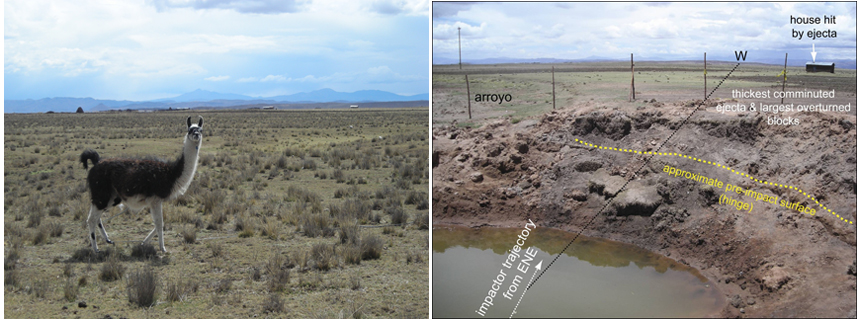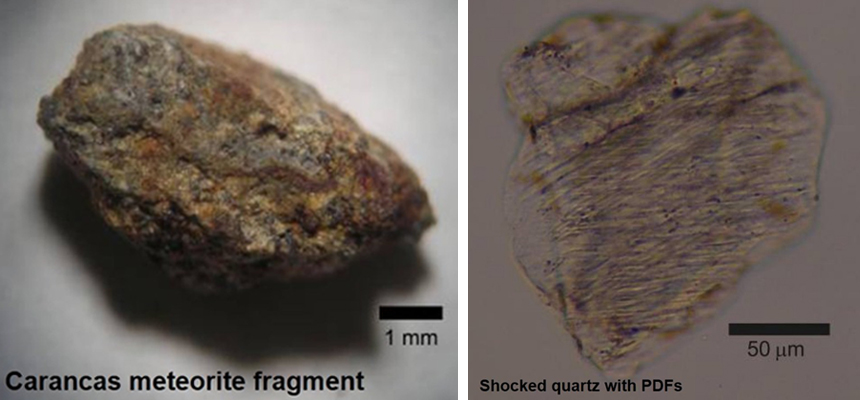Almost everyone has heard about the huge fireball that exploded over Chelyabinsk, Russia on the morning of February 15, 2013. But after the explosion, the fragments that made it to the ground were tiny and traveling slower than the speed of a bullet.
Almost five and a half years earlier, an asteroid, only the size of a washing machine and weighing about one ton, was still traveling faster than 10,000 mph when it collided with the Earth, just after noon on September 15, 2007. The shock wave excavated a crater more than sixty feet across near the village of Carancas in the high plains of the Peruvian Andes.

I was a member of the first scientific team invited to the site by the Peruvian government to investigate. We interviewed a farmer who witnessed the impact from just over 100 yards away. He was shaken by the blast wave as it catastrophically compressed the air around him, but he was not seriously injured. A llama and a bull nearby were not as lucky.

Our team found that the shock wave had caused the asteroid to disintegrate into millions of sand-sized pieces. Only a few larger meteorites (walnut-size) were found by villagers and collectors soon after the impact. We found that the rim was uplifted and overturned, a unique characteristic of asteroid impact craters. Soil and rock had been thrown far from the crater, one piece of these ejecta punching a whole in the tin roof of a small house. Samples I collected also showed that the mineral grains in the target sediments had been changed by the shock wave passing through them. In particular, grains of quartz sand contained sets of planar fractures (PFs) and thin parallel lamellae filled with glass, called planar deformation features (PDFs). PDFs are formed only in asteroid impacts and nuclear explosions. This evidence helped the team constrain the velocity of the impact at almost 5 km/s. The shock wave detonated with the force of about four tons of TNT. If the impact had occurred in a populated area, there would have been significant loss of life and property.

This month our team presented a proposal to the Peruvian government to return to Carancas a decade after the impact. We hope to understand how to recognize the craters produced by these small but dangerous strikes on Earth’s surface after the obvious scars have been modified or erased by wind and water. It is important to determine how often these small impacts have occurred throughout the past so that we can assess the risk of future hazards accurately.
-R. Scott Harris
Staff Geologist
Fernbank Science Center
